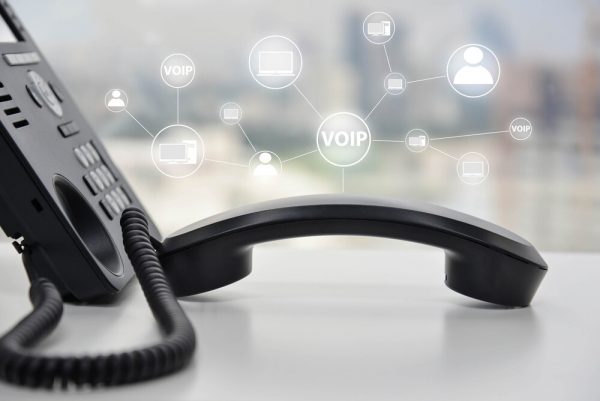Although we’re now living in an era dominated by wireless phones and virtual phone numbers, the significance of landline telephones is still very evident. On the contrary, most people would probably wonder if a landline is still worth keeping. But even if it’s no longer a necessity, there are still plenty of reasons why a landline is nice to have in the office or even at home. Thus, in this guide, you will find the cheapest way to keep a landline phone number. There’s not just one but six options you can compare to determine which works best on your end.
Inside This Article
What’s Good About Keeping a Landline?

First things first. Due to the dominance of smartphones and wireless phones, you may be wondering if keeping a landline is still relevant. Although landlines aren’t as innovative as smartphones, they are still one of the most reliable forms of communication. If you’re planning to cut off the cord, here are some of the good reasons why you should keep it instead:
Easy Access to Emergency Numbers
Landlines are one of the reliable forms of communication in case of emergency. It’s an excellent tool for calling 911. Every second is crucial during an emergency, especially if the elderly, young children, and people with injuries or critical conditions are involved.
When using your landline, emergency responders can easily track your home address associated with your landline service. As a result, they will know where to find you easily compared to using a mobile phone. Moreover, landlines help you communicate clearly without any signal or network interruption.
Eliminate Power Problems
When a power outage happens in your area, your smartphone could be compromised. Its battery can get drained, especially if you forgot to power it up recently or electricity restoration takes too long. On the other hand, landlines work typically through copper cables and don’t even require electricity. Thus, you can still use your landline during a power interruption.
Better Network or Signals
If you’re in a remote location, cellular phones may have weaker signals. Eventually, they result in dropped calls and unstable connection. Landlines that are integrated with copper wirings don’t have similar problems. If you’re residing in an area with poor network coverage, it’s best to have a landline as a backup in case you can’t connect via a cellular network.
Separate Personal and Business Ventures
Maintaining a work-life balance helps boost productivity and leads to happier and healthier lives. One of the common methods to do this is to have separate lines of communication for personal and work matters. Having a landline at home exclusively for family and friends is an excellent way to separate work or business calls. On the other hand, during off-work hours, you can always have a smartphone ready for a few conversations regarding work or business.
Keep Existing Contacts
The majority of households have landline services that have been subscribed for an extended period. For business owners, existing clients have already saved your number in case they want to contact you again. The bottom line is that many people in your network already have your old landline number for contacting you. If needed, you can “port” or move your landline number to another service provider.
Serves as a Backup
If your smartphone is stolen or missing, you can always resort to a landline as a backup. Hence, you can still contact someone even without your cellular phones. In case of emergency, landlines offer an inexpensive backup. If you can’t afford to purchase a new smartphone yet, a landline can still help keep you updated with urgent matters.
Safety Reasons
Chances are, your home CCTV or security system is already synced with your landline. Hence, eliminating your landline involves overhauling your security setup and configuration. Furthermore, the process can involve expensive fees. Instead of cutting off permanently, it’s a good idea to retain your landline phone number especially if its primary purpose is for home security.
Cheaper Services
Little did you know, having a landline service is a great way to save money. Some telephone service providers give discounts to their subscribers who prefer a bundled service for their cable, landline, and internet needs. That said, if you have an existing bundled service with a company, your monthly subscription becomes expensive once your landline service is canceled. If you’re looking for a DSL internet subscription, ensure that you choose a bundled service that provides huge discounts.
Great Learning Tool
Landlines are one of the best devices for teaching your children about phone etiquette. Unlike smartphones, kids can’t access videos, games, music, and other content on landlines that aren’t appropriate for their age. Hence, you can always teach them how to answer and make phone calls politely, eliminating the distractions that come with a smartphone.
Senior-Friendly Tool for Communication
Not everyone can learn to use the smartphone immediately. For example, if you have grandparents or elderly at home, having a landline is the most reliable form of communication with them. With landlines, all they need to accomplish is to pick up the handset, dial a number, and speak to someone instantly — be the purpose catching up with family or seeking help during an emergency.
6 Cheapest Landline Services Without Internet
If you’re now convinced that a landline is still an excellent device for backup, you can always choose more affordable alternatives for keeping a landline at home. Having a landline at home doesn’t have to be expensive.
Here are the six services to consider if you’re searching for the cheapest way to keep a landline phone number:
| Name | Countries Supported | Price | Plan | Other Features | Next Step |
|---|---|---|---|---|---|
 Unlimited Nationwide CallingSM |
US
|
$25 per month
|
AT&T’s Unlimited Nationwide Calling One
|
For residential and non-business use only
|
|
|
Mexico and other Latin American countries
|
$24.25/month
$60/month
|
Basic Home Phone
Home Phone Unlimited
|
Call waiting, voice mail, and caller ID
|
||
|
US, Canada, and Mexico
|
$20/month
|
Cox Voice Preferred
|
Keep landline phone number and directory listing
|
||
 Spectrum Voice
|
US, Canada, and Mexico
|
$29.99/month
$14.99/month
|
Spectrum Voice Standalone
Bundled with TV and/or internet
|
3-way calling, call blocking, and more
|
|
 Verizon Fios Digital Voice
|
US
|
$20/month
|
Verizon Fios Digital Voice
|
Call forwarding and voicemail-to-email integration
|
|
 Xfinity Voice Unlimited Saver
|
US
|
$20 per month, excluding fees and taxes
|
Voice Unlimited
Local
Voice Unlimited Saver
|
Call waiting and 3-way calling
|
|
1. AT&T Unlimited Nationwide Calling One
Without a doubt, AT&T is one of the best and trusted landline service providers in the country. And it may be the cheapest way to keep your landline phone number if it meets all your needs. The company offers inexpensive plans with popular landline features. With AT&T’s Unlimited Nationwide Calling One subscription, you can enjoy unlimited domestic calls, as well as direct-dialed long-distance calls.
It’s one of the affordable options out there that integrates long-distance services. For $25 a month, you can call someone anytime regardless of which state they reside in the US.
AT&T’s Unlimited Nationwide Calling One is for residential and non-business use only. Hence, it does not support commercial fax, auto-dialing, and telemarketing.
2. CenturyLink Basic Home Phone
CenturyLink offers two packages for landline service: the Basic Home Phone and the Home Phone Unlimited, costing $24.25/month and $60/month respectively. CenturyLink’s Basic Home Phone subscription doesn’t offer long-distance calling and other advanced calling features such as call waiting, voice mail, and caller ID. If you’re fine with just unlimited local calls, CenturyLink’s Basic Home Phone is the cheapest way to keep a landline phone number.
On the contrary, if you prefer more advanced features, you can upgrade to the Home Phone Unlimited subscription.
3. Cox Voice Preferred
Cox offers one of the cheapest ways to keep a landline phone number through its Cox Voice Preferred plan. For only $20/month, you’ll not only get a basic landline service but also enjoy more than 14 calling features. Aside from that, you can have unlimited calls with someone anywhere in the US, Canada, and Mexico. Hence, it’s one of the best landline services available for its kind.
Other features of the Cox Voice Preferred subscription include keeping an existing landline phone number and directory listing. However, Cox’s landline service is for residential use only. Otherwise, your account will be subject to suspension or termination of service.
4. Spectrum Voice
Spectrum Voice might be the cheapest way to keep a landline phone number if the first three options didn’t tick all boxes for you. Through the Spectrum Voice subscription, you’ll enjoy unlimited local and long-distance calling. Aside from that, your voice package already includes a plethora of popular home phone features, including speed dial, call waiting with caller ID, return calls, call blocking, and three-way calling.
Spectrum Voice offers a standalone plan, costing $29.99/month. You can get it for a lower price if you opt for the subscription that’s bundled with other Spectrum services.
5. Verizon Fios Digital Voice
With Verizon’s Fios Digital Voice plan, you get to enjoy excellent and reliable nationwide calling coverage and advanced calling features. One of its unique integrations is the remote access feature. Given that, you can have Verizon’s home phone connectivity even when you’re on-the-go. Through call forwarding and voicemail-to-email integration, you won’t have to worry about missing an expected call when you’re still not at home.
You can subscribe to Verizon Fios Digital Voice as a standalone plan for only $20/month. Bundled Fios Plans are also available.
6. Xfinity Voice Unlimited Saver
Xfinity has three subscriptions to help you with keeping a landline phone at home. Its voice subscriptions include Xfinity Voice Unlimited, Xfinity Voice Local with More, and Xfinity Voice Unlimited Saver. The Voice Unlimited Saver is the cheapest way to keep a landline phone number with Xfinity’s service. Through Voice Unlimited Saver, subscribers get to enjoy unlimited calls nationwide, and basic calling features such as call waiting with or without caller ID, and 3-way calling.
Xfinity Voice Unlimited Saver costs $20 per month, excluding fees and taxes.
Understanding How Landline Works
With our roundup done, you now have an idea of the cheapest ways to get or keep a landline phone number. But if you’re among the few uninitiated (those with no experience calling via landline or barely remember how to do so) who stumbled upon this writeup, stick around a bit. Here, we elaborate on how a landline phone functions, so you won’t get lost once you get your device and plan.
Parts of a Landline Phone
The underlying processes behind how a landline phone works won’t be possible without the parts. Thus, it is good to familiarize or reacquaint yourself with the components first via this quick refresher. Traditional landlines have three primary parts, namely the following:
Switch
This part is responsible for connecting and disconnecting the landline from a network. As soon as you lift the handset, the switch will connect you to the network.
Speaker/Eardrum
This is the upper section of the handset and is placed near your ear every time you lift it.
Microphone/Mouthpiece
This part consists of carbon granules condensed between two metal plates. Your voice’s sound waves compress and decompress the carbon granules, modifying the granules’ resistance and regulating the existing flow through the mouthpiece.
Processes Involved Within the Landline
Now onto the processes. When an individual is calling someone over the landline, the sound waves made by that person enter through the handset’s mouthpiece. The electric current transmits the sound through the landline of the one being called. A landline has two main processes involving the receiver and the transmitter.
The telephone’s transmitter acts as an “electric ear.” It is placed on the rear of the landline’s mouthpiece. Similar to the human ear, the transmitter consists of 14 eardrums. The telephone’s eardrum has a round metallic disk known as the diaphragm. When an individual speaks into the handset, the sound waves trigger the landline’s diaphragm and vibrate them. Through this process, the diaphragm has different vibration speeds. Its speed relies on the variants in air pressure that is caused by the different tones of the caller’s voice.
Meanwhile, the receiver works as an “electric mouth.” Similar to the human voice, the receiver consists of “vocal cords.” The receiver’s vocal cords are also called the diaphragm. There are two magnets placed at the end of the diaphragm, causing them to vibrate. One of the magnets is permanently placed to hold the diaphragm, while the other is an electromagnet.
It is made from a piece of iron with a coiled wire around it. When an electric current transmits through the coil, the coiled wire is magnetized. The electromagnet’s pull can be weak or strong based on the current’s strength. As a result, the electromagnet manages the diaphragm’s vibrations in the receiver.
The electric current moving through the electromagnet is either weaker or stronger, depending on the richness of sounds. Through this process, the diaphragm’s vibration relies on the speaker’s pattern of speech. As the diaphragm navigates in and out, it has a push-and-pull direction of the air around it. The air pressure triggers sound waves that are similar to the ones being processed in the transmitter. The sound waves initiate conversations in the ear of the listener.
How Long Can You Keep a Landline Phone Number?
So, you’ve tried the cheapest way to get or keep a landline phone number. Is there a limit to how long you can retain your landline phone number, you ask? Here’s the answer: when to cut off a landline service for good depends on a subscribers’ discretion in general. Unless there’s a good reason to cut off your landline service (e.g. relocation to another country), you can always port your number to a new service provider.


